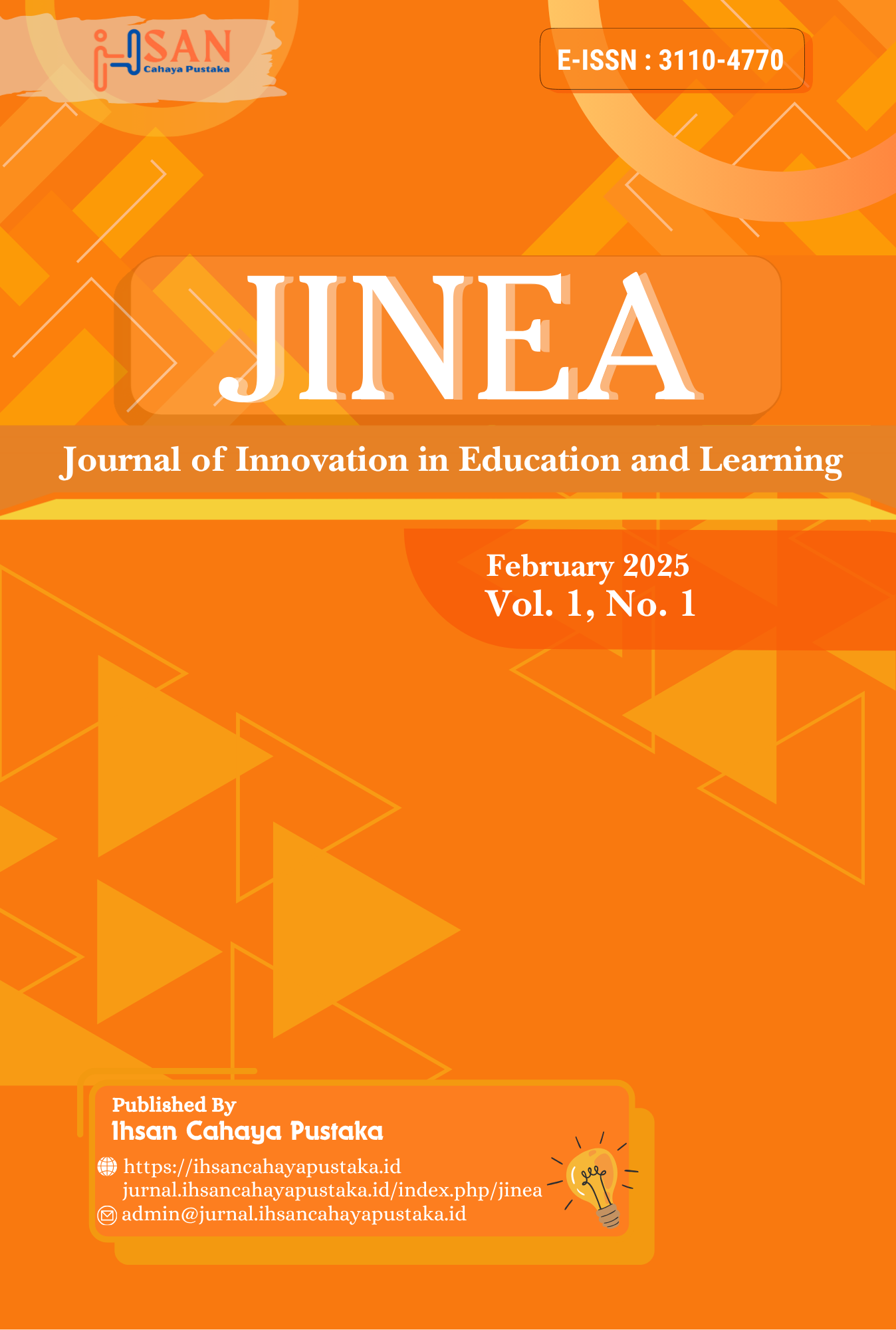Innovative Reading Aloud Approach for Enhancing Pronunciation and Speaking Fluency of Students
Keywords:
Pronunciation Improvement, Reading Aloud Technique, EFL Learners, Phoneme ArticulationAbstract
Pronunciation is a vital component of English language mastery, yet many EFL learners face persistent challenges due to limited exposure and practice. This study examines the effectiveness of an innovative Reading Aloud approach in enhancing pronunciation and speaking fluency among students. The approach integrates structured phonetic drills, prosodic awareness training, and peer feedback within a communicative learning framework. Using a pre-experimental design with a single-group pretest–posttest, participants were assessed through targeted pronunciation tests focusing on the /ʃ/, /ð/, and /θ/ sounds. Data were analyzed using the Wilcoxon signed-rank test to measure improvement. Findings reveal a significant enhancement in pronunciation accuracy (p = 0.0367 < 0.05; Z = –2.089), with most participants demonstrating notable progress. Students also reported increased confidence and motivation in oral communication. The novelty of this study lies in combining traditional reading aloud with interactive, feedback-driven activities to address specific phoneme articulation issues in the school context. These results underscore the potential of the Reading Aloud approach as an effective, low-cost, and adaptable technique for EFL pronunciation teaching. Future studies should expand the sample size and compare its effectiveness with other pronunciation-focused instructional strategies.
Downloads
References
Abd. Syakur, Rosidi Azis, & Sukarsih. (2020). Developing Reading Learning Model to Increase Reading Skill for Animal Husbandry Students in Higher Education. Britain International of Linguistics Arts and Education (BIoLAE) Journal, 2(1). https://doi.org/10.33258/biolae.v2i1.220
Alfia, N., Sumardi, S., & Kristina, D. (2021). Integrating digital literacy into efl classroom: a study of the theory of planned behavior. JPI (Jurnal Pendidikan Indonesia), 10(3). https://doi.org/10.23887/jpi-undiksha.v10i3.29812
Amri, Z. (2024). Self-regulated Learning and Academic Achievement in the EFL Classroom. Journal of English Language Teaching and Applied Linguistics, 6(1). https://doi.org/10.32996/jeltal.2024.6.1.11
Bezemer, J., & Cowan, K. (2021). Exploring reading in social semiotics: theory and methods. Education 3-13, 49(1). https://doi.org/10.1080/03004279.2020.1824706
Cabrera-Pommiez, M., Lara-Inostroza, F., & Puga-Larraín, J. (2021). Assessing academic reading in students entering higher education. OCNOS, 20(3). https://doi.org/10.18239/OCNOS_2021.20.3.2614
Georgiou, G. P. (2019). EFL teachers’ cognitions about pronunciation in Cyprus. Journal of Multilingual and Multicultural Development, 40(6). https://doi.org/10.1080/01434632.2018.1539090
Ghani, N., Jamian, A. R., & Abdul Jobar, N. (2022). Environmental Impact of Reading Literacy Development. Malaysian Journal of Social Sciences and Humanities (MJSSH), 7(4). https://doi.org/10.47405/mjssh.v7i4.1425
Hairston-Dotson, K., & Incera, S. (2022). Critical Reading: What Do Students Actually Do? Journal of College Reading and Learning, 52(2). https://doi.org/10.1080/10790195.2022.2033648
Indah, R. N., Toyyibah, Budhiningrum, A. S., & Afifi, N. (2022). The research competence, critical thinking skills and digital literacy of indonesian efl students. Journal of Language Teaching and Research, 13(2). https://doi.org/10.17507/jltr.1302.11
Jaelani, A., Sadyawati, A., & Rosmawati, W. (2020). Using Reading Aloud Technique to Stimulate Students Reading Comprehension. Tarling : Journal of Language Education, 3(2). https://doi.org/10.24090/tarling.v3i2.3499
Kosasih, M. M. (2021). Factors Affecting Indonesian Students in Learning English Pronunciation. International Research in Higher Education, 6(3). https://doi.org/10.5430/irhe.v6n3p13
Low, E. L. (2021). EIL Pronunciation Research and Practice: Issues, Challenges, and Future Directions. RELC Journal, 52(1). https://doi.org/10.1177/0033688220987318
Mohammed, M. A. A., & Idris, S. A. M. (2020). Challenges of Pronunciation to EFL Learners in Spoken English. Multicultural Education, 6(5).
Mukhroji, M. (2020). Exploring the academic writing needs to improve the academic literacy of the Indonesian EFL undergraduate and masters students. International Journal of Innovation, Creativity and Change, 10(10).
Nangimah, M. (2020). How should we counter challenges in teaching pronunciation for EIL? JET (Journal of English Teaching), 6(1). https://doi.org/10.33541/jet.v6i1.1357
Plailek, T., & Essien, A. M. (2021). Pronunciation problems and factors affecting English pronunciation of EFL students. Turkish Journal of Computer and Mathematics Education, 12(12).
Ratnawati, R., Faridah, D., Anam, S., & Retnaningdyah, P. (2018). Exploring Academic Writing Needs of Indonesian EFL Undergraduate Students. Arab World English Journal, 9(4), 420–432. https://doi.org/10.24093/awej/vol9no4.31
Riswanto, R. (2022). The interference of EFL student’s native language in students english pronunciation. JRTI (Jurnal Riset Tindakan Indonesia), 7(3). https://doi.org/10.29210/30031957000
Saputra, E., Saputra, D. B., Handrianto, C., & Agustinos, P. (2022). EFL students’ perception towards online learning: what to consider? IJELTAL (Indonesian Journal of English Language Teaching and Applied Linguistics), 7(1). https://doi.org/10.21093/ijeltal.v7i1.1242
Sherine, A., Sastry, M. M., & Seshagiri, A. V. S. (2020). Improving second language speaking and pronunciation through smartphones. International Journal of Interactive Mobile Technologies, 14(11). https://doi.org/10.3991/ijim.v14i11.13891
Sucena, A., Marques, C., Silva, A., & Carneiro, J. F. (2022). Reading Fluency of Higher Education Students. Paideia, 32. https://doi.org/10.1590/1982-4327e3240
Suprayitno, E., Rois, S., & Arifin, A. (2019). Character value: The neglected hidden curriculum in Indonesian EFL context. Asian EFL Journal, 23(3).
Tambunan, A. R. S., Andayani, W., Sari, W. S., & Lubis, F. K. (2022). Investigating EFL students’ linguistic problems using Grammarly as automated writing evaluation feedback. Indonesian Journal of Applied Linguistics, 12(1). https://doi.org/10.17509/IJAL.V12I1.46428
Wang, H. (2021). Visual Literacy in Secondary EFL Education in China: A Semiotic Perspective. Language and Semiotic Studies, 7(4). https://doi.org/10.1515/lass-2021-070402
Yuniarti, Y., Yulian, R., & Yuniarti, Y. (2022). Digital Story Telling Based on Multimodal Elements on EFL Learners’ Speaking Performance. JPI (Jurnal Pendidikan Indonesia), 11(2). https://doi.org/10.23887/jpiundiksha.v11i2.40217
Downloads
Published
Data Availability Statement
Data sharing is not applicable to this article as no datasets were generated or analyzed
Issue
Section
License
Copyright (c) 2025 Journal of Innovation in Education and Learning

This work is licensed under a Creative Commons Attribution-ShareAlike 4.0 International License.













